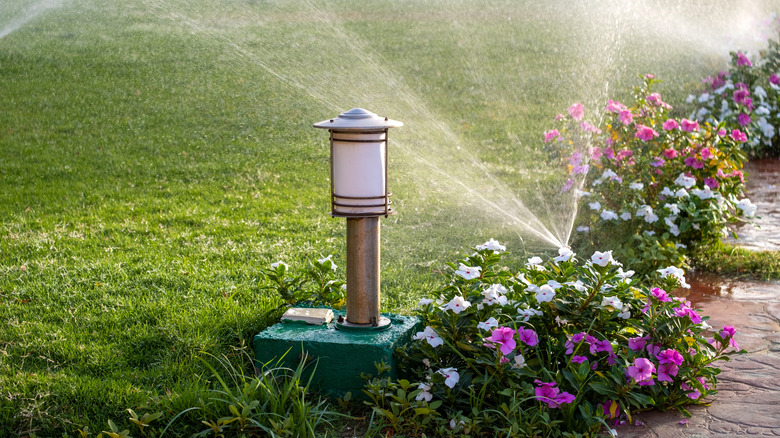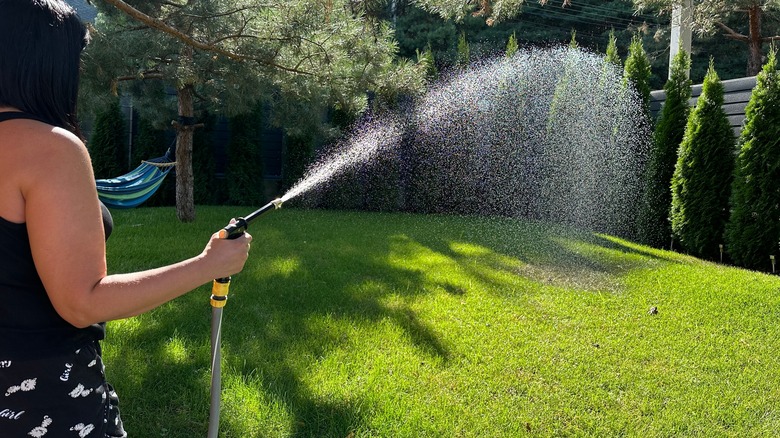How To Know When It's Time To Start Watering The Lawn Regularly
One of the major requirements to creating a lush, green lawn is offering it adequate water at the right times. How do you know when you should start regularly watering your lawn? You can typically tell it's time to water the lawn regularly when you reach temperatures consistently over 70 degrees Fahrenheit. However, your lawn's particular needs may vary depending on the type of lawn grass, such as cool-season or warm-season grass, as they respond differently to soil temperatures. Your region's climate can also play a part.
Finding the perfect balance between when to water and when to hold off can be tricky. Waiting to water until you reach these temperatures is important, because your grass is just easing out of dormancy, the period where its growth stalls. Warm-season grasses go into dormancy when the temperature drops during cooler months, while cool-season grasses remain green. What looks like "dead grass" on your lawn might actually be dormant grass, and you can disrupt its natural cycle by watering it too much too early.
Your grass is just like any other plant in that it needs proper care to flourish. Make the mistake of watering your lawn too much, and you increase your chances of a pest infestation in your yard. Your grass may also develop more weed growth, fungus, or bare patches. Too little water for your lawn, and you're left with dry, brittle grass that ruins your home's curb appeal. Once you're ready to water your lawn regularly, here's how to go about it.
How to water your lawn regularly
Once temperatures regularly stay in the 70s, it's time to bring out the sprinkler or hose, but how much should you water the lawn? Most lawns typically need 1 to 1.5 inches of water a week to fully soak the soil and roots. Before you water, test how wet the soil is by dipping your finger into the dirt or by sticking a screwdriver into the ground. If either your finger or screwdriver slides in easily, your lawn is thirsty! Watering in the mornings before 10 a.m. is best, as the soil can sufficiently soak in the water. Consider the soil variety you have as well. For instance, clay soil drains much slower than rocky soil, so it won't need as frequent watering. Try to water the lawn deeply, with at least 1 inch per week, rather than shallow watering daily. Try to make adjustments for rain, so you don't oversaturate your grass.
While waiting for the right temperatures to start watering your lawn regularly is important, there also may be a time when it's too hot. If experiencing temperatures over 90 degrees Fahrenheit, resist the urge to water, or at least wait until the cooler part of the day, such as 5 p.m. to 9 p.m. Watering during any other time where the temperature is high increases the chances of evaporation. Waiting until the cooler parts of the day decreases these chances and lets the water fully hit the roots. It's important to alter your schedule, if needed, if living in an area with water conservation needs, so you adhere to local guidelines.

